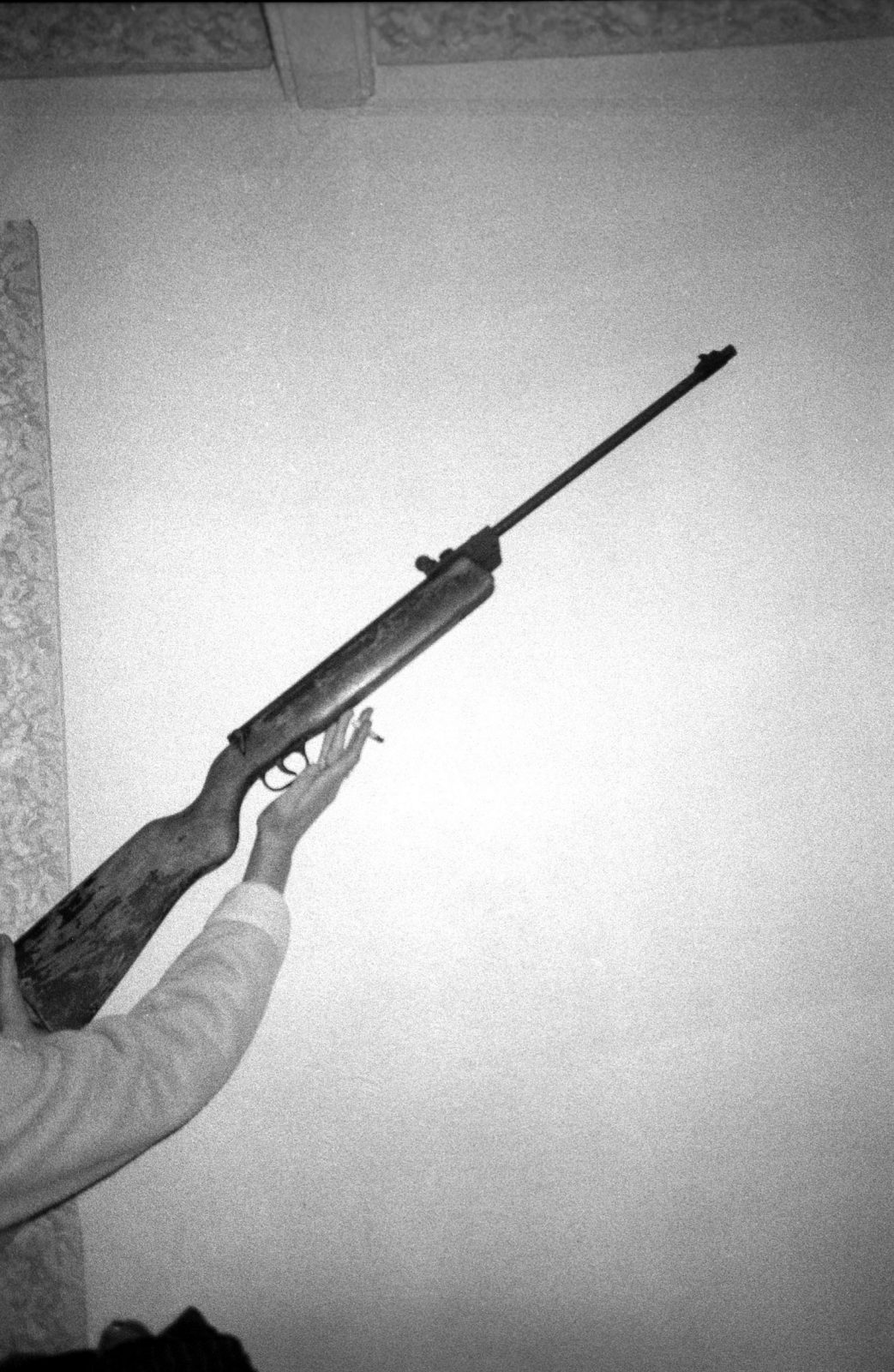In the Autumn/Winter issue of Photoworks 2005/6, Ben Burbridge reviewed the photographer and ex-Brighton University student, Claire Julia Hughes' exhibition, Exterior Others.
“The player on the other side is hidden from us.” Aldus Huxley
Claire Hughes’s photographs do not make for easy viewing. These are pictures which absorb light, or emit darkness. They present us with a claustrophobic space that excludes any sense of a world beyond the confines of its own oppressive interior. Although some aspect of their subject may appear familiar – children, a young couple, the self-conscious posing of adolescent girls – these images will never sit alongside smiles and birthdays in a family album. They display a domesticity of an altogether different order, where infants emerge from shadows entranced by the flickering glow of a solitary candle and an ownerless arm reaches for its gun. This is a world that we perhaps would rather not see, a suffocating arena in which we cannot help but sense a threat, something askew, a tension and an as yet unplaceable presence which shrouds the domestic in a feeling of disorder.
[ms-protect-content id=”8224, 8225″]
This sense of domestic dis-ease seems to tie these pictures to the grainy intimacy which permeates Richard Billingham’s photographs of his dysfunctional family or Larry Clark’s black and white studies of teenage speed freaks in Oklahoma suburbs – snatched glimpses at the homely turned awry. It is similarly due to the intimate relationship which exists between the photographer and her subject that we are granted access to this previously closed world – Claire Hughes came to know these figures over a series of years, a friendship which preceded any photographic intention. But, unlike the work of Clark or Billingham, her photographs are rooted in an understanding that to simply reproduce this reality may not be enough, that with intimacy also comes responsibility and that a subject such as this may all too easily slip into a voyeuristic space, satisfying our own morbid appetite for the other. Hughes’s photographs adopt the act of viewing as their central concern, probing accusingly at the thinly worn claims that a straightforward depiction of a ‘brutal reality’ might constitute an artistic end in itself. This is a mediated world, and it is this act of mediation that lends ‘Exterior Others’ its full potency.
Claire Hughes is present in each of her photographs – not simply the invisible other half of the relationships which the pictures partly document – but a tangible, material presence. It is her arm which reaches in to stroke or to push the softly-focused contours of one female subject. It is her manipulation in Photoshop that steeps these images in shadow, rendering children featureless, silhouettes which hover like spectres at the edge of the frame, on the margin. Hers is a vision that darkens. Again and again, we are forced to look through or past an object, become conscious of the act of viewing and the desire of the camera to objectify and contain. Occasionally this look is returned, in a moment of female defiance, though more often it remains unmet and so fixes its subject with a cold, cruel glare. In one photograph, a teenage lad peers through one eye at his unknowing female companion and we catch a glimpse of ourselves, as though in a mirror. If we sense an abuse here, a disorder, then it is to the act of looking, and of photographing, to which it becomes tied.
Together, these photographs represent a trangressive act, premised on a painful identification. Whilst they document a domestic disquiet, it is from the uncomfortable vantage of the perpetuator that we are forced to view this disturbance. Hughes’s images exude a troubling ambiguity, a vision of their subject which treads uneasily between affection, desire, and something more unspeakable, a stirring we would rather leave unacknowledged. As distressing as this empathy may feel, we should understand its manufacture as a rebellious act. By forcing this identification, Claire Hughes steps out of the passive space this same gaze would prescribe for her, and attempts to comprehend its oppressive desire to objectify and control. If her photographs make you cringe, then they have done their work, more powerfully than any sentimental line up of martyred females and angelic infants. The dark figure which they hint at lives somewhere near us all. If we are not forced to understand him, then he will pass again, unrecognised.
[/ms-protect-content]
Published in Photoworks Issue 5, 2005 edited by Gordon MacDonald
Commissioned by Photoworks
Buy Photoworks issue 5
